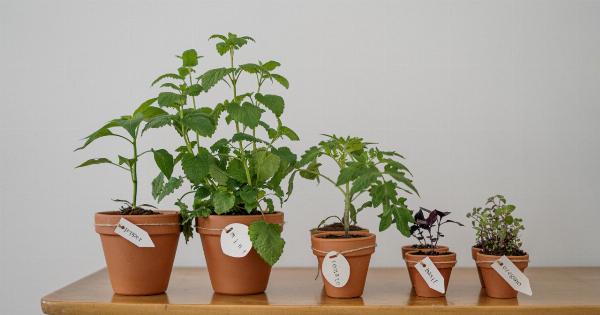Antibiotic resistance is a growing concern in modern medicine. Overuse and misuse have contributed to the rise of antibiotic-resistant bacteria that pose a significant threat to public health.
With current antibiotics becoming ineffective, scientists are searching for new alternatives. One potential alternative may surprise you.
What is Antibiotic Resistance?
Antibiotic resistance occurs when bacteria learn to resist the effects of antibiotics. The bacteria may evolve to protect themselves against a specific antibiotic, making it ineffective for treating infections.
The overuse and misuse of antibiotics in both humans and animals have led to an increase in antibiotic-resistant bacteria. This is a major concern as infections that were once easily treated with antibiotics are now becoming more difficult to cure, which can lead to higher rates of hospitalization, death, and other long-term sequelae.
What is Broccoli?
Broccoli is a member of the cabbage family that has been consumed for thousands of years. It is a cruciferous vegetable that is rich in vitamins, minerals, and potent antioxidants, such as sulforaphane, glucosinolates, and carotenoids.
These compounds are known to have anti-inflammatory, anti-cancer, and antimicrobial properties. This has led to scientists exploring its potential for fighting antibiotic-resistant bacteria.
Broccoli’s Antimicrobial Properties
Studies have revealed that sulforaphane, a compound found in broccoli, has potent antimicrobial properties against several species of bacteria, including antibiotic-resistant strains such as methicillin-resistant Staphylococcus aureus (MRSA) and carbapenem-resistant Enterobacteriaceae (CRE). Sulforaphane is believed to achieve its antimicrobial effects by damaging the bacterial cell membrane, leading to cell death.
Additionally, other compounds found in broccoli, such as isothiocyanates and indoles, have also been shown to have antimicrobial effects.
Broccoli’s Potential Against MRSA
MRSA is a type of bacteria that is resistant to several commonly used antibiotics. This makes it difficult to treat and dangerous, especially for individuals with weakened immune systems.
Fortunately, studies have shown that sulforaphane can inhibit the growth of MRSA and enhance the effectiveness of conventional antibiotics, such as methicillin and vancomycin. Additionally, sulforaphane has been shown to reduce the production of toxins produced by MRSA, which can reduce the severity of infections.
Broccoli’s Potential Against CRE
CRE is a family of bacteria that are resistant to commonly used antibiotics, including carbapenems, which are often considered to be the last-resort antibiotics for treating infections.
This makes CRE a significant threat to public health, as infections caused by these bacteria are often difficult to treat and can be deadly. Fortunately, studies have shown that sulforaphane can inhibit the growth of CRE and enhance the effectiveness of conventional antibiotics, such as meropenem.
Additionally, sulforaphane has been shown to reduce the production of toxins produced by CRE, which can reduce the severity of infections.
Bioavailability of Broccoli’s Compounds
While broccoli has been shown to have potent antimicrobial properties, the bioavailability of its compounds can be low. This means that the body may not absorb and use these compounds efficiently, potentially limiting their effectiveness.
However, scientists are exploring ways to increase the bioavailability of these compounds, such as enhancing the absorption and retention of sulforaphane. For example, co-administration of a myrosinase enzyme, which is required to convert sulforaphane, with broccoli may enhance the bioavailability of sulforaphane.
Additionally, supplementing with sulfurophane-rich broccoli sprout extracts has been shown to enhance the delivery of sulforaphane.
Conclusion
The growing threat of antibiotic-resistant bacteria has forced scientists to look for new alternatives to combat infections.
Broccoli, a cruciferous vegetable rich in potent antimicrobial compounds, may hold promise in the fight against antibiotic-resistant bacteria, including MRSA and CRE. While more research is needed to fully understand its effectiveness and bioavailability, it is an interesting avenue to explore for potential new treatments.































